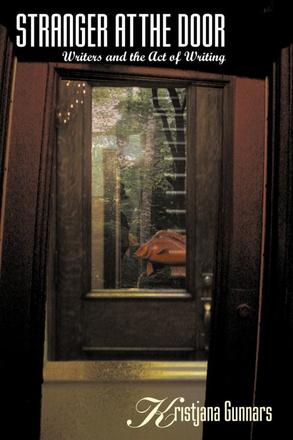
Description
At the beginning of a new writing project—whether it’s the first page of a new novel or a less ambitious project, writers often experience exhilaration, fear, or dread. For Kristjana Gunnars, the call of a new project is “like someone you don’t know knocking on your door—you either choose to let the person in or not. It’s both exciting and dangerous to start a new manuscript.” This book is an engagement with that “stranger” called writing.
Creative or imaginative writing is a complex process that involves more than intellect alone. Writers make use of everything: their sensibilities, history, culture, knowledge, experience, education, and even their biology. These essays seek out, and gather into a discussion, what writers have said about their own experiences in writing. Although the writers are from around the world and of very different backgrounds, the commonality of their remarks brings home the realization that writers everywhere are grappling with similar problems—with the seemingly simple problems of when, where, why, and what to write, but also larger questions such as the relationship between writer and society, or issues of privacy, appropriation, or homelessness. While none of these questions can be definitively answered, they can be fruitfully discussed.
Originating as questions posed in creative-writing seminars, these essays have grown into companion texts for both writers and readers who want to participate in a conversation about what writers do.
Reviews
Stranger at the Door may be ... satisfying to readers looking for mini-lectures, studded with questions and references, on the theory of writing.
- Candace Fertile, The Globe and Mail, 2005 March
One of the greatest strengths of the book: Gunnars is a meticulous reader as well as writer as she explores the act of writing through a range of voices. She engages these voices in converstaion and she makes the links and conections as she forges a writing community that spans the globe....Interestingly, rather than making...links to her own oeuvre explicit, she allows them to hover, like the `shadow text' that she alludes to elsewhere in this provocative collection.
- Joanne Saul, University of Toronto Quarterly, Letters in Canada 2004, 2006 June
Stranger at the Door offers a diverse and exciting vantage on the elusive nature of writing.
- Christopher Wiebe, VueWeekly, 2005 October
A pleasure to read....This book should be of interest to general readers and to students and scholars interested in literary theory. It is very beautifully, simply, accessibly written, and addresses many of the theoretical issues that have preoccupied Canadian writers over the past two decades....One of its strengths is its firm location in Canadian letters, but with a profoundly internationalist, particularly European, informing perspective....It also pioneers several new areas: [including] the link between spirituality and writing.
- Di Brandt, award-winning poet and author of Now You Care
After you read this book, after you sit through this celebration with Gunnars as your host, you will feel full of unexpected wisdom about both writing and life....You will revere language and image; you will have the humility to embrace doubt and unknowing and multi-faceted truth....You will be haunted by words and harried by boundaries.
- J.M. Bridgeman, Prairie Fire Magazine, 2005 November